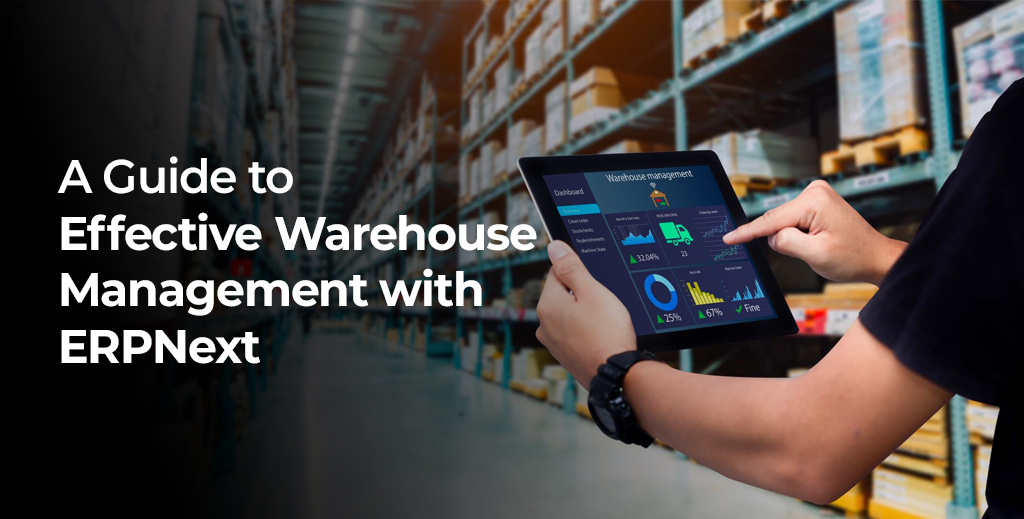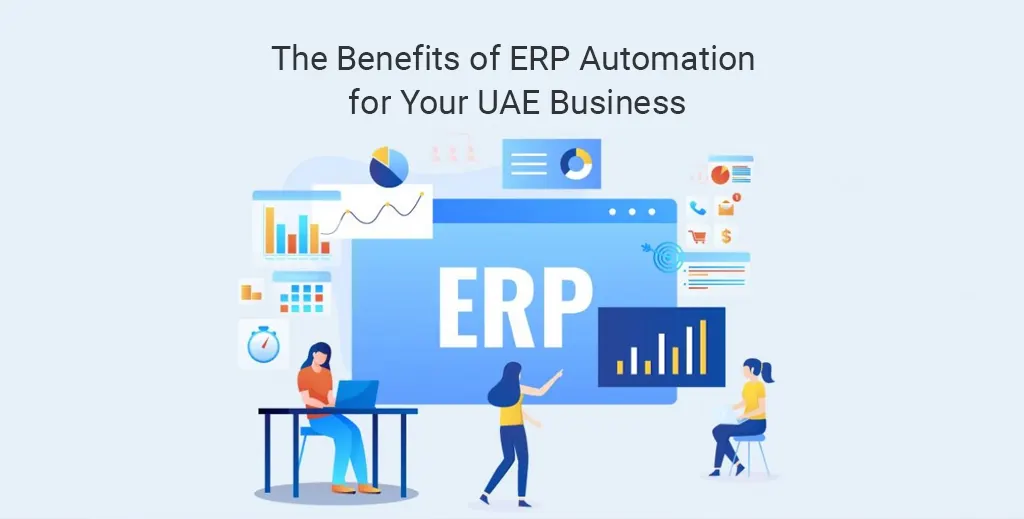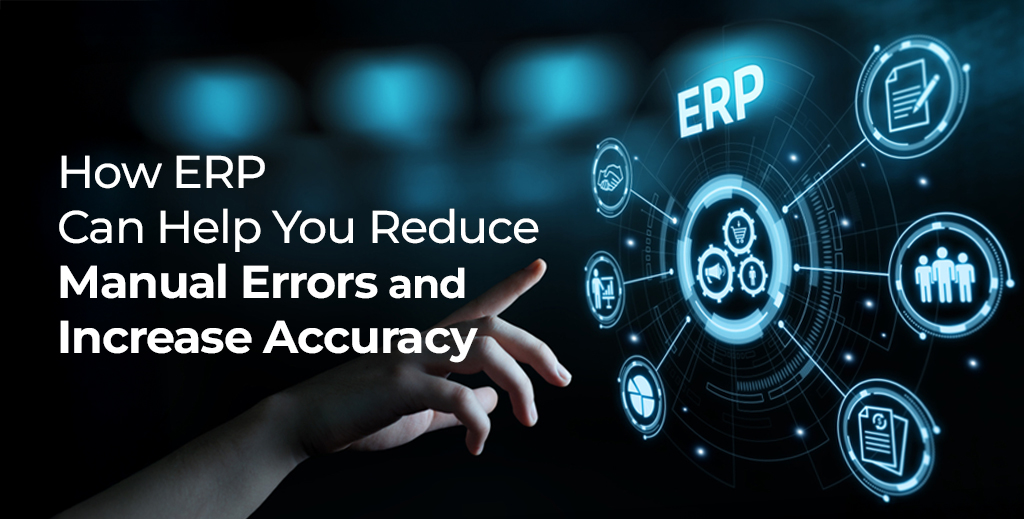
Warehouse management plays a vital role in ensuring operational efficiency, reducing costs, and enhancing customer satisfaction. For businesses in fast-paced markets like Dubai, where space optimization, real-time inventory control, and streamlined logistics are essential, effective warehouse management is a key driver of success.
Without a proper system, companies often face issues like stock inaccuracies, order delays, and operational bottlenecks that hurt profitability and service levels. That’s where ERPNext Software proves to be a game changer.
ERPNext is a powerful, open-source ERP solution designed to simplify and automate business operations, including inventory and warehouse management. It integrates seamlessly with purchase, sales, accounting, and logistics modules, enabling businesses to maintain full control over their stock movements and warehouse operations.
This guide provides a comprehensive overview of warehouse management using ERPNext. From setup to automation, inventory control to order fulfillment, you’ll learn how to make your warehouse smarter, faster, and more efficient, especially tailored for businesses operating in Dubai’s competitive market.
Understanding Warehouse Management with ERPNext
Before diving into the how, it’s essential to understand the why! In this section, we’ll walk through the key features of ERPNext that make it an ideal solution for managing warehouse operations, particularly in a region like Dubai, where demand, storage, and logistics often move at high speed.
ERPNext offers a centralized, digital platform to manage every aspect of your warehouse, from stock tracking to shipment handling. Its real-time capabilities and user-friendly interface make it one of the most reliable warehouse tools for businesses in Dubai.
Key Features and Benefits:
- Real-time stock visibility: Know exactly what’s in stock, where it’s located, and what needs replenishment.
- Multi-warehouse support: Manage multiple locations or zones within a single platform.
- Automated restocking: Set reorder levels and allow ERPNext to generate purchase requests.
- Batch and serial tracking: Ideal for electronics, pharmaceuticals, and perishable items.
- Barcode integration: Speeds up item handling with higher accuracy.
ERPNext simplifies the entire supply chain from procurement to delivery while ensuring minimal manual intervention. For companies that manage large volumes of goods or operate in multiple locations, this solution helps prevent stockouts, avoid overstocking, and improve order fulfillment speed.
Setting Up Your Warehouse in ERPNext
Now that you know why ERPNext is powerful, let’s roll up our sleeves and get practical. This section covers the foundational step: setting up your warehouse inside ERPNext. Done right, this digital structure will reflect your actual physical layout, helping you manage storage zones, locations, and inventory with precision.
Step-by-Step Guide:
1. Create Warehouse Entries:
Navigate to the “Warehouse” module → Click “New” → Define your main and sub-warehouses with unique names and hierarchy (e.g., WH/Dubai/Main, WH/Dubai/Returns).
2. Configure Warehouse Layout:
Plan your zones, bins, or shelves within ERPNext. Use naming conventions that mirror your physical warehouse to minimize confusion.
3. Set Up Storage Locations:
Allocate locations by item types, like fragile items, fast-moving goods, or perishable stock—for better organization and speedier access.
4. Enable Inventory Tracking Features:
Activate serial and batch tracking if applicable. Use expiry dates for food, medicine, and other time-sensitive goods.
This proper setup ensures accuracy in stock management and operational clarity for Dubai-based businesses navigating complex inventory workflows.
Managing Inventory with ERPNext
Once your warehouse is structured, it’s time to put it to work. The true power of ERPNext lies in how it handles inventory, whether you’re tracking quantities, costs, or movement across multiple locations. This section explains how to manage all aspects of inventory with confidence and control.
Inventory Management in ERPNext:
- Inventory Tracking & Reporting:
Access dynamic reports like Stock Balance, Stock Ledger, and Bin Reports for real-time data that supports smarter purchasing and stocking decisions.
- Stock Level Management:
Define stock thresholds. When minimum levels are hit, ERPNext can automatically trigger purchase requests or production planning, helping you avoid stockouts.
- Inventory Valuation and Costing:
ERPNext supports valuation methods such as FIFO, Moving Average, and Serialized costing, giving you clear insights into pricing strategies and profit margins.
- Stock Reconciliation:
Easily compare system-recorded stock with physical counts and resolve discrepancies instantly, ensuring your records are always accurate.
- Managing Item Variants and Batches:
Handle different sizes, colors, or versions under one item family. ERPNext also supports batch control with manufacturing and expiry dates for regulated industries.
Inventory is the heart of warehouse operations, and ERPNext ensures it beats in perfect sync with your business needs.
Streamlining Warehouse Operations with ERPNext
Managing inventory is only one side of the equation; the real efficiency comes from how smoothly your warehouse operations run day to day. ERPNext helps businesses streamline their operations by introducing intelligent automation, structured workflows, and real-time communication across teams. Automating workflows becomes simple yet powerful you can create rule-based approval flows for stock movements, reordering, and delivery processes. This not only minimizes manual intervention but also ensures that each action is consistent and trackable. Automated alerts for low stock levels, delays, or task assignments allow warehouse managers to proactively address issues before they escalate.
Another standout feature of ERPNext is its ability to efficiently manage pick lists and packing slips. When an order is placed, the system generates pick lists that can be instantly assigned to warehouse staff, ensuring fast and accurate item collection. Packing slips are then created to verify that each package is correctly packed and labeled, minimizing shipping errors. ERPNext also offers robust shipping and delivery tracking tools through Delivery Notes, which can be updated manually or through third-party logistics integrations. Customers benefit from real-time updates and automated notifications, improving their post-purchase experience. In addition, the platform simplifies returns and replacements by guiding teams through structured workflows for restocking, repairing, or discarding items. This streamlined reverse logistics process supports operational efficiency and reinforces customer satisfaction. Through these capabilities, ERPNext empowers Dubai-based businesses to elevate warehouse performance and confidently meet market demands.
Best Practices for Effective Warehouse Management with ERPNext
This section covers best practices that help you maintain warehouse efficiency and ensure long-term performance.
- Conduct Regular Inventory Audits:
Routine cycle counts and stock audits help maintain system accuracy. ERPNext’s reconciliation tools make updating discrepancies hassle-free.
- Leverage Reporting Tools:
Use dashboards and custom reports to identify underperforming SKUs, excess inventory, or fast-moving items that require priority stocking.
- Train Staff Continuously:
Equip your team with the knowledge to use ERPNext’s tools effectively, especially for barcode scanning, picking, and dispatch.
- Refine and Optimize Workflows:
Periodically review automation workflows, pick path efficiency, and warehouse layouts to identify and eliminate bottlenecks.
- Keep Master Data Clean:
Deactivate obsolete SKUs, maintain up-to-date supplier and item details, and ensure all entries follow naming conventions.
Following these practices ensures your ERPNext-driven warehouse operates at peak efficiency, aligned with your business’s evolving demands.
FAQs
1. Can ERPNext handle multiple warehouse locations across Dubai?
Yes, ERPNext supports multiple warehouses, allowing you to manage different branches, zones, or external storage from a centralized system.
2. Is barcode scanning supported in ERPNext?
Absolutely. ERPNext integrates with barcode and QR code scanning tools to improve picking, packing, and inventory updates.
3. How does ERPNext help prevent overstocking or understocking?
You can set minimum and maximum stock levels per item. ERPNext will automatically suggest reordering when thresholds are met.
4. Can I track perishable or expiring goods in ERPNext?
Yes. Batch tracking and expiry date features make ERPNext ideal for industries like food, pharma, and cosmetics.
5. Is ERPNext customizable for specific warehouse workflows?
Yes. ERPNext is highly flexible and can be tailored to your industry needs, whether it’s eCommerce fulfillment or manufacturing logistics.
Conclusion
Warehouse management is a critical component of operational excellence, and businesses in Dubai must be agile, efficient, and tech-savvy to stay ahead. With ERPNext Software, you gain full control over your inventory, workflows, and warehouse performance through one seamless platform.
From real-time tracking to smart automation and performance reporting, ERPNext enables your team to work faster, smarter, and more accurately. Whether you’re scaling operations or optimizing existing setups, ERPNext is the key to unlocking warehouse efficiency and reliability.
Looking to implement ERPNext for your business? Kepler Tech, a Business software provider in Dubai, is here to help with expert implementation and support tailored to your business goals.


